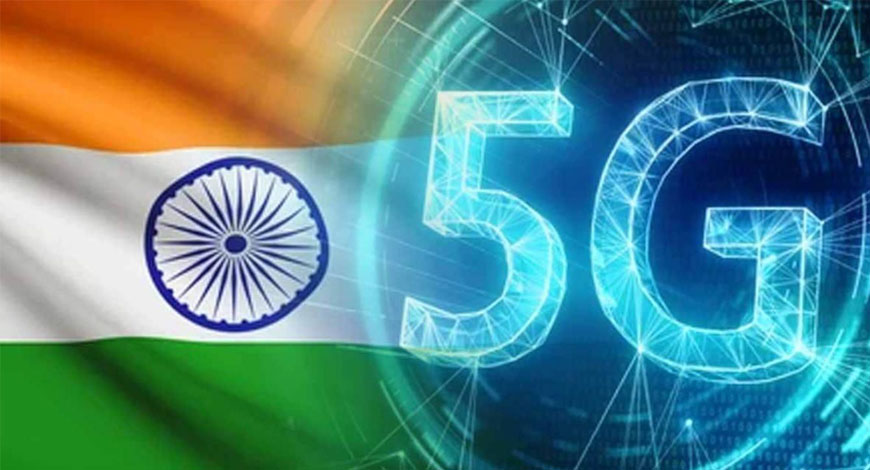5G
India’s 5G milestones: Reaching 7,000 cities in just one year

Nearly a year ago, India made yet another generational shift in mobile communications by launching 5G-enabled telecom services. The iconic (and aptly named) Pragati Maidan became perhaps the first site in the country to have 5G telecom services for public use at scale, at the annual India Mobile Congress (IMC) 2022. A year later, Pragati Maidan itself has come a long way, with a new convention centre and a makeover. Within this one year, more than 7,000 cities and towns (and almost all key urban areas) have become 5G-enabled, thanks to two telecom operators..
By TRAI’s estimates, these operators surpassed their three-year targets for network rollout within six months. Both of them are expected to offer 5G across the whole of India within the next six months. Two other operators may soon join the fold. The Government deserves applause for enabling this, with its strong push for 5G launch and a smooth spectrum allocation process.
Lagging 5G Adoption
The geographical coverage for 5G is encouraging, but much needs to be done for greater adoption by users. For instance, per last reported numbers, Airtel has around 375 million wireless customers, out of which there are only 50 million unique 5G users – a small fraction. To address this, 5G handset adoption, and smartphone adoption in general, needs to shoot up. TRAI notes that in India, the cheapest internet enabled smartphones cost over 35 percent of the average monthly income.
In developed countries, this figure is below 5 percent, highlighting a fundamental difference in our markets. If we dig deeper, China launched 5G services in 2019, and has reached an impressive 714 million 5G users by August 2023. China claims that this constitutes 60 percent of the global total. Similarly, the United States launched 5G services in 2019, and has since ensured extensive coverage. The claims from large operators there range from providing 5G coverage to 98 percent Americans, to covering more than 2700 cities in the country.
With this objective, TRAI is running a consultation to eventually issue recommendations on digital inclusion. The industry will also benefit if several other outstanding concerns such as reallocating underutilised spectrum bands and enabling efficient backhaul allocation would be resolved quickly.
Ensuring Smooth 5G Expansion
Equally important to consider is the financial viability of implementing 5G at scale. The telecom sector has undergone financial upheaval over the last few years, and is only recently recovering from disruptions which began 2016 onwards. The average revenue per user or ARPU for wireless services only crossed pre-2016 figures last year.
The sector will truly benefit from expansion of the 5G technology once it taps into revenue streams such as value added services and the still untapped rural subscribers. The Government’s additional emphasis on local manufacturing of telecom and networking products will further enable faster, cheaper and more efficient adoption of 5G. For example, as per October 2022 estimates, the Production Linked Incentive scheme is expected to generate additional sales of Rs 2.45 lakh crore and create additional employment of more than 44,000 over the scheme period.
So how do average users gain? In simple terms, they get better and quicker connectivity, with the ability to use many more connected devices. That may not seem the most palpable change in the first blush – our peak Internet speeds seem fast already. However, it is considerable enough if we imagine the diverse applications apart from mobile communications that are in store for us.
Paired with Internet of Things, 5G can make far-reaching changes in the healthcare sector through remote patient care. It further supports smart factories and automation across industries. It also benefits the energy and automotive sectors through remote monitoring, analytics and real-time data transfer. Globally, 5G has been implemented across several of these domains.
Road To 6G
Commendably, India is not resting on its laurels. With talk of 6G building up, India is eyeing to be a global supplier of 6G solutions to the world, and even participate in the 6G standards setting. With this objective in mind, India has secured more than 200 patents in the field of 6G technology and has actively participated in the ITU’s study group on 6G, where its contributions have been incorporated into the group’s framework document.
Recognising the advantages of being an early adopter in this field, the Indian government established a 6G Technology Innovation Group in 2021. In turn, the group formed six task forces, each with a specific focus area, which ranged from addressing spectrum-related issues to advancing next-generation networks and setting standards.
Earlier this year, demonstrating India’s commitment to becoming a global leader in the sector, the Prime Minister inaugurated ITU’s first office in Delhi and introduced the “6G Vision Document”. This vision document is a culmination of the reports generated by each of the task forces and outlines India’s strategy for spearheading developments in the 6G space.
It delineates the government’s roadmap over two phases until 2030, encompassing the exploration of 6G technology ideas and use cases specific to India, its development, and eventual commercialisation. Most notably, the document provides concrete recommendations from the task forces on how to attain these objectives.
From catching up with the developed world on all the preceding “generations” in communication technologies, this is indeed a proverbial “leapfrog”. While the adoption of 6G is far away – estimated to be around 2030 – such bold and confident steps bodes well for India’s future. Moneycontrol















You must be logged in to post a comment Login